10 of the World’s ‘Spikiest’ Living Things
Not all creatures or plants have a guaranteed way to defend themselves against others who want to harm them. Nature has given many species a built-in safeguard from their predators, and some have no protection at all. An earthworm, for example has no guard against the birds that would scoop them up and swallow them whole. A marigold flower was gifted with a bad odor to ward off many animals that would eat them, but is this odor enough of a defense to guard against all predators? No, it is not. There are some animals that would just hold their noses… and some were given no great smelling ability to begin with, so they would not care. There are some living things that have inoculations that will preserve them from being endangered. They will not be on the endangered list for a long, long time.
1. Thorny Devil
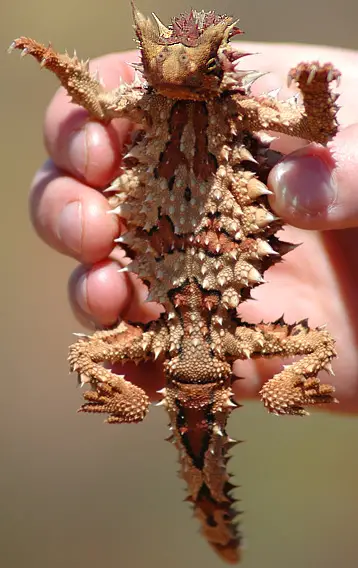
This gentle lizard lives in central Australia, an arid and sandy habitat. It feeds on ants and tarantulas and grows up to 8 inches long. You would think that something this small would be prime pickings for most other animals, but this thorny devil is covered with sharp, hard thorns. Not only does that deter predators, but the thorny devil also can camouflage itself by changing colors to imitate its surroundings. This animal knows another trick. It has a false head on the back of its neck so when a predator comes around the thorny devil will bury its real head in the sand for protection.
2. Sea Urchins
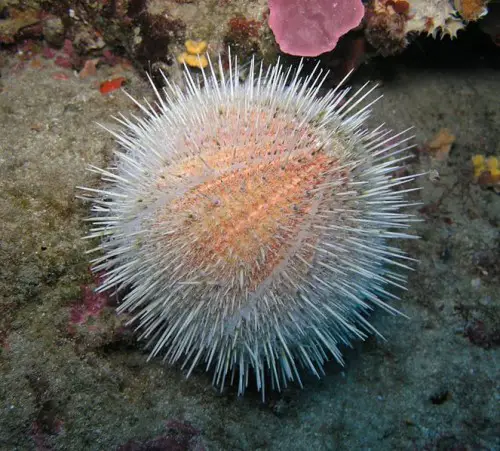
Fascinating animals that have spines surrounding their shell for protection, these animals do have a couple of predators that find their way around the spikes: humans and sea otters. There is not too much to eat on a sea urchin, but as typical humans, we will always find something to eat or a use for it. People actually collect them for decoration. One kind of urchin, the flower urchin, has venom on the tip of its spikes. Nobody wants to eat a poisonous pincushion! The sea urchin has hundreds of tiny tuber feet, which they use for traveling. They eat bits of plants and small animals by using their teeth. They grow five teeth in the middle of their backside, which they use to pull, tear and rip algae off rocks. They are about four inches and come in many different colors, purple and pink being the most common. The sea urchin can live and reproduce for up to 200 years.
3. Lionfish
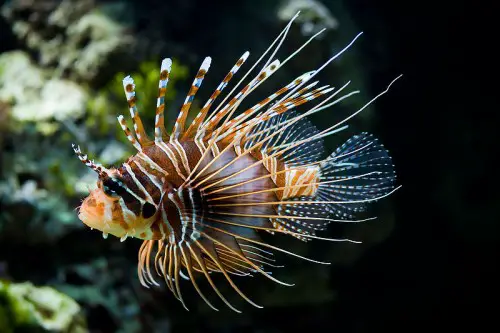
The stunning lionfish is named for its fan-shaped fins and a spiky dorsal fin, which make them look like they have a huge lion’s mane. They have two predator defenses that come in handy. One is that their color allows them to be camouflaged in their habitat, and they also have venom in their dorsal spines. This poison will make a human sick and unable to breathe normally, but it is very seldom fatal. The lionfish will grow to be about a foot long, and people describe them as being ill tempered because the fish has nothing to fear thanks to its sharp and venomous spikes. It is considered one of the most poisonous fish in the world.
4. Porcupine fish
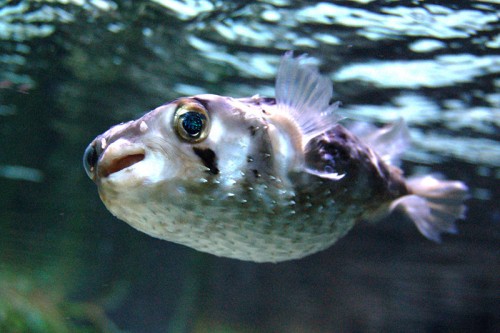
These interesting little swimmers are much like the puffer fish, only they have spines all over their skin. The fish grows to be around four feet or larger and instead of having venom in their spikes, the porcupine fish have a poison in their bodies, which if ingested could paralyze a person or even cause death. These fish have large beck-like teeth that never stop growing, so they like to live around coral to bite on and wear their teeth down. If they are threatened by another bigger fish, the porcupine will inflate its body, just like the puffer, and become too big for the predator to eat. These fish are great swimmers except, as you can imagine, when they are all puffed up.
5. Australian echidna
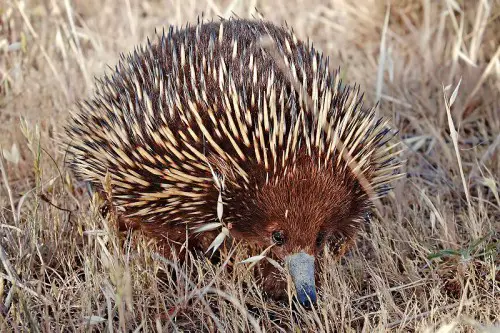
These echidnas are sometimes called spiny anteaters. Their bodies are brownish black and covered with spines and coarse hair. The arms of the echidna are very strong with claws that are designed to dig. The snout on this animal is long and tubular which helps them smell their prey and eat it, too. The echidna’s snout also contains a sticky tongue that helps the animal catch their prey. They can stick their tongue in an ant hole and come out with hundreds of their favorite snack. Some even have spikes on their tongues. These spiny anteaters can live to be 40 or 50 years old.
6. European Hedgehog
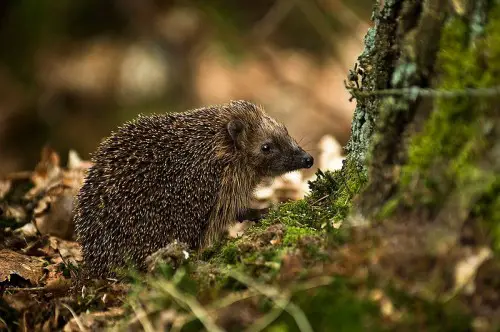
This hedgehog has no tail so that more of its body can be covered with dense spines. When in danger, the hedgehog will roll up in a ball of spines to stick anything that wants to take a bite. They are little guys growing to only nine or ten and a half inches long. They love to eat small animals, worms, insects and spiders, but they will also try to find birds’ eggs to eat. This might be the European hedgehog’s downfall. They are eating so many eggs of ground nesting waders like Snipe, Dunlin, Redshank and Lapwing, that they are considered a pest in some areas.
7. Spiny-backed Orb Weaver
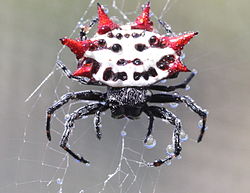
Even though this little spider is noticeable because of its colors, it does not have anything strange or different going on with it otherwise. It does have a hard abdomen that can be white, orange, or yellow with red markings. And, oh, yes… there are thorns coming out of this abdomen that supposedly protect it from predators, but the spider is so small no other animal can see it to eat it. Other than that, it is a typical spider that weaves flat webs to catch flying bugs for its dinner. They are harmless and only come indoors if someone or something brings them inside.
8. Io Moth Caterpillar
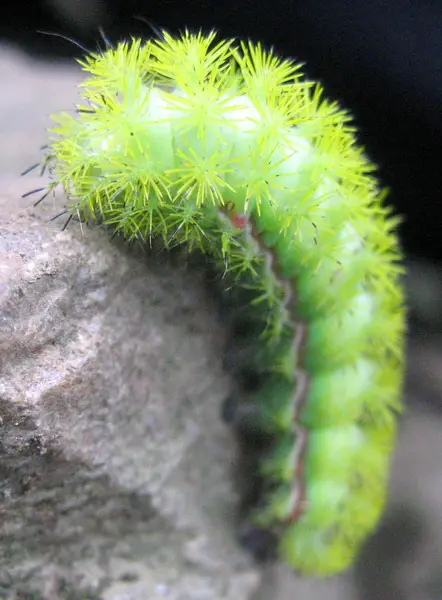
This little caterpillar is very cute with its little yellow trees sticking out all over its body. You would probably want to pick it up to have a closer look. If you did, you would more than likely have either an itchy or a burning sensation or need medical assistance. Those little yellow tree-like structures are spines that are attached to poison glands and are meant for predators. Their bodies are pale green with yellow and red stripes growing to about two inches. Even though they catch your eye and are interesting to look at, you had better look at them from afar. These caterpillars turn into the most beautiful butterflies you have ever seen.
9. Spike-headed Katydid
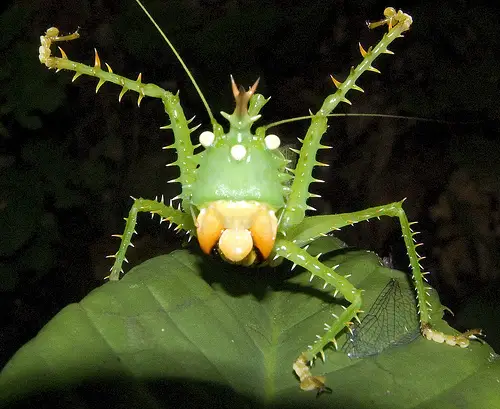
This is the craziest looking thing ever seen. It is related to the grasshopper and cricket, but this katydid must have been adopted. This insect is a bright beautiful green color with little thorns all over its body—even its legs. If you would touch one of the thorns, it would easily cut through your skin. Its head is bigger than a grasshopper’s head, and it has what looks like a crown on the top of it made out of thorns with a reddish hue.
10. Thorn Trees of Africa
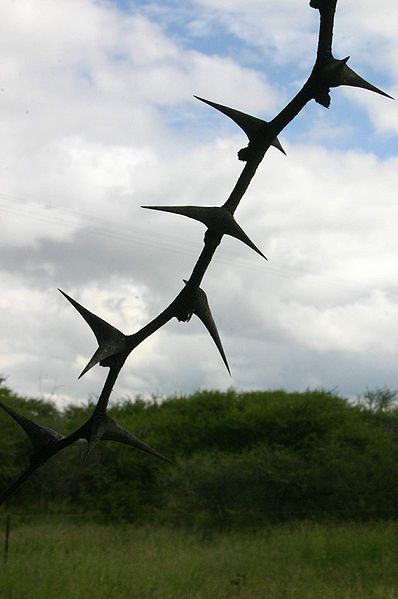
Last but not least is a plant that has tremendous thorns growing all over it. The thorns can be long and straight or short and curved. These thorns deter any animal from climbing it to eat the leaves, but some animals, like giraffes, have leathery tongues and don’t feel the pain against either type of thorn. When this happens, the tree produces chemicals, which make the leaves taste bad. This acacia also has a deal worked out with cocktail ants. They chase off insects while the tree lets them live in the thorns and eat sweet sap the tree produces.



Trully interesting, great post.
Amazing!
It’s wounderful !
It’s a wonderful world!
I’m surprised the Crown of Thorn starfish wasn’t here. besides that, It was one of the most amazing websites i read.